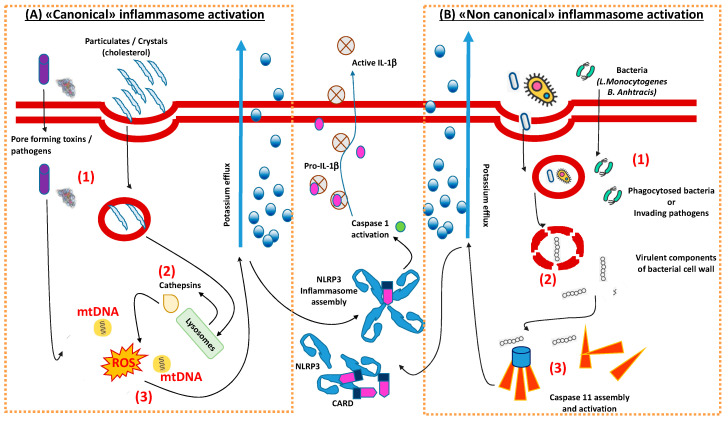Figure 1.
Summary of cellular mechanisms leading to the activation of the NLRP3 inflammasome. Depending on the pathogenic activator, two different types of cellular mechanisms lead to the assembly and activation of NLRP3 inflammasome, crucial for the production of atherogenic molecules (interleukin (IL)-1β). (A) The “canonical pathway” is (1) activated by the phagocytosis of molecular products (e.g., cholesterol crystals in the atherosclerotic lesion) or peculiar pathogen-associated molecules or cellular stimuli (e.g., ATP via the P2X7 receptor), and involves (2) the activation of lysosomial cathepsins and (3) pro-apoptotic mitochondrial signals. (B) The “non-canonical pathway” evolutionary developed for the phagocytosis of peculiar bacterial species, (1) either by endocytosis or by direct invasion; this in turn (2) activates programmed digestion of these products with the release of virulent proteins from the wall membrane of bacteria which (3) induce the assembly of caspase 11. Both mechanisms induce massive efflux of potassium, which is then crucial for the assembly of the components of the NLRP3 inflammasome. This will finally turn pro-caspase 1 into active caspase 1 to favor the release of the final mature form of IL-1β. mtDNA, mitochondrial DNA; ROS, reactive oxygen species; CARD, caspase activation and recruitment domain.

